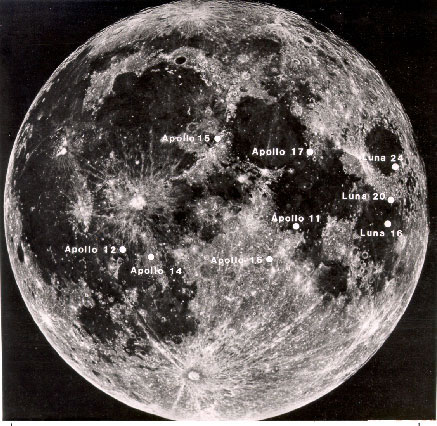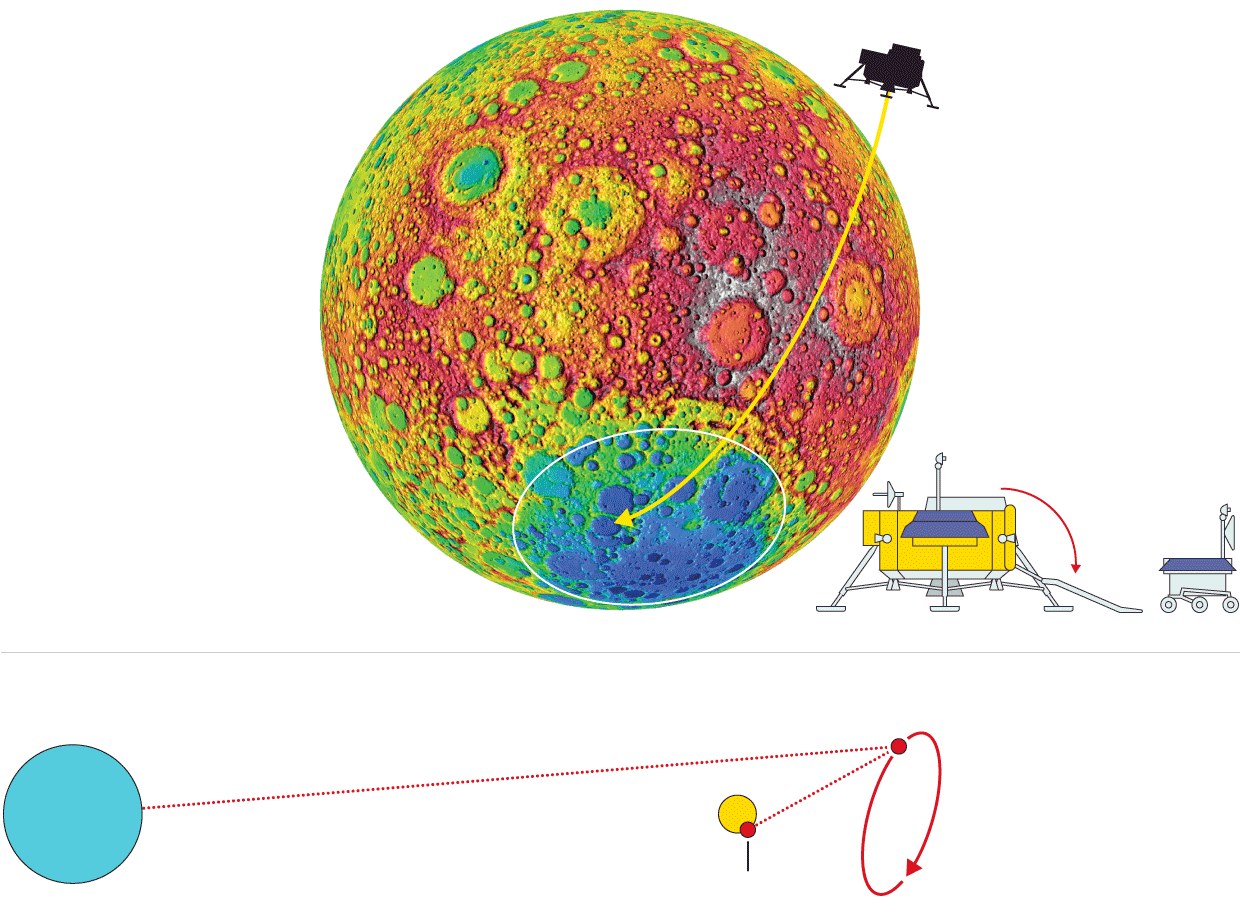Humankind's Obsessive Curiosity
"This is a historic step in international scientific exploration of the moon, opening up the Luna Incognita of the lunar far side to surface exploration for the first time."
James Head, scientist, Brown University, Rhode Island
"We use radio wave lengths to probe everything from black holes in the local neighbourhood to distant galaxies, so a radio observatory on the far side [of the moon] could be a huge boon to astronomy."
Briony Horgan, scientist, Purdue University, Indiana
"We would be able to listen to a distant echo of the Big Bang and see the universe in a state before the first-ever stars formed."
"That was a baby picture [cosmic heat map of the universe dated 370,000 years after the Big Bang]."
"[From the far side of the moon it might be possible to] see a movie of the evolution of the young universe from toddler to puberty."
Heino Falcke, radio astronomer, Radboud University Nijmegen, Netherlands
 |
| An artist’s impression of Chang’e 4 on the moon. Photograph: Costfoto/Barcroft Images |
Now that China has landed its Chang'e-4 lunar explorer, scientists from all over the world are anxious to understand finally why those two sides of the moon are so radically different; one illuminated by the sun and never viewed from our planet. China's second moon landing when Chang'e-4 settled on the far side on January 3 represents a milestone and the expectations are high that the data it will deliver will answer many scientific questions about the formation of the Universe.
 |
The far side of the moon, as seen by NASA's Lunar Reconnaissance Orbiter.
Credit: NASA/Goddard/Arizona State University |
This dichotomy occurred, according to some astronomers' hypotheses, as a result of the crust on the near side being substantially thinner than that on the far side, making ti easier for magma to emerge on the near side. Were that to be the most plausible explanation that through samples yet to be extracted and studied the mystery of the differences on each side's crust thickness might be explicated. Asteroids and comets smashed the rocky planets in the early history of the solar system, leaving craters.
 |
| The Moon is divided into two basic physiographic regions: smooth maria and cratered highlands. The smooth maria fill the large circular basins and spill out onto low lying regions. They were sampled by Apollo 11, 12, 15 and 17 and Luna 16 and 24. The ejecta blankets of the large basins were sampled by Apollo 14, 15 and 17. The heavily cratered highlands were sampled by Apollo 16 and Luna 20. Note the great distances covered by rays from fresh craters. NASA photo no. 84-31673 (Lick Observatory) |
Hopes are high even in these early days that Chang'e-4 may provide some of the answers to these critical questions of the early formation of the Universe. The moon's far side presents as a solution to a mystery whereas on Earth and other rocky planets volcanoes washed these craters away over aeons of time. Studying the far side of the moon is being viewed as an opportunity to assess and investigate a pristine surface of the moon's early days; in particular to unravel the geological record of the time when the moon was assaulted by ancient objects.
It has long been the dream of astronomers to build and install a radio telescope on the far side of the moon, shutting out the many sounds that emanate from Earth, such as cellphones, television stations and cars which a radio telescope on the near side would pick up, muffling the distant, more muted and ancient sounds of an exploding and forming Universe. Study of the primordial clouds of hydrogen gas that coalesced into the first stars of the Universe might be feasible with future lunar missions.
 |
The geology of the far side is rougher, more cratered and contains more ancient material than the near side. Tidal forces long ago slowed the moon's rotation so that the less-dense highlands of the far side face away our planet. This topographic image from Nasa shows the highest elevations in red and the lowest in blue.
|

0 Comments:
Post a Comment
<< Home